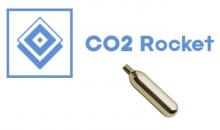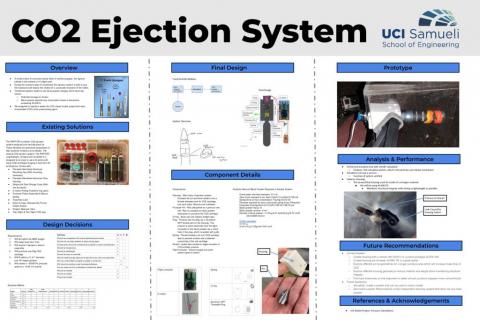Rocket Project Liquid CO2 Ejection System
Background
A recovery system is essential for any rocket launch. The UCI Rocket Project recovery system is composed of a parachute that is contained in the head of a rocket that is deployed through some type of ejection system. In the past, conventional ejection systems utilized black powder (BP) and e-matches to ignite the BP in order to pressurize the cabin, which would pop off the nose cone and deploy the parachute.
CO2 ejection systems are becoming an increasingly popular alternative to the traditional BP ejection method. Combustion of BP is inconsistent at high altitudes (>20,000 ft) and the associated system can also be complicated to install before launch. BP tends to leave a residue on the system damaging components and the interior system. CO2 ejection systems have been proven to perform consistently at over 50,000 ft and offer a cleaner and safer solution compared to BP. The control and deployment process of the CO2 ejection system is also expected to be more straightforward compared to the BP method where ignition and combustion are involved.
Goal and Objectives
To create an ejection system where CO2 is the pressurizing agent for future UCI Rocket Project teams. A full assembly and manufacturing guide will be provided to the UCI Rocket Project team.
Design Goals
One of the constraints of the project is to use the current electronic system that the rocket project is providing, which is the existing flight computer. The conventional black powder system utilized "e-matches", which are the ignition sources connected to the flight computer. As a result, the project design will likely continue to use black powder due to the flight computer and e-match constraint, but it will only use black powder as the actuation method, and not the pressurization method.
Team Contact
Darin Sie (sied@uci.edu)
Sponsor
Xian Shi (xianshi@uci.edu)


